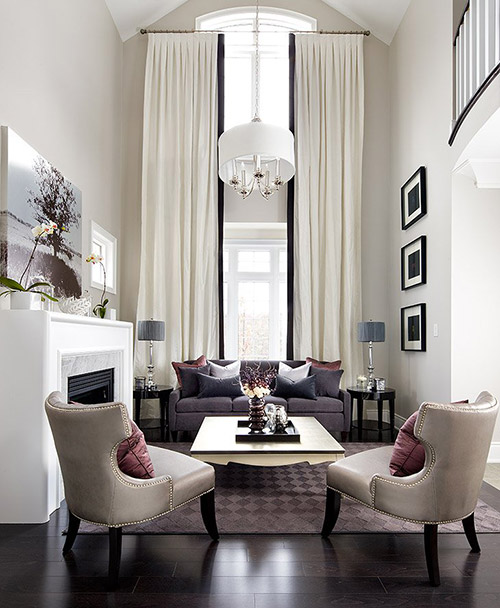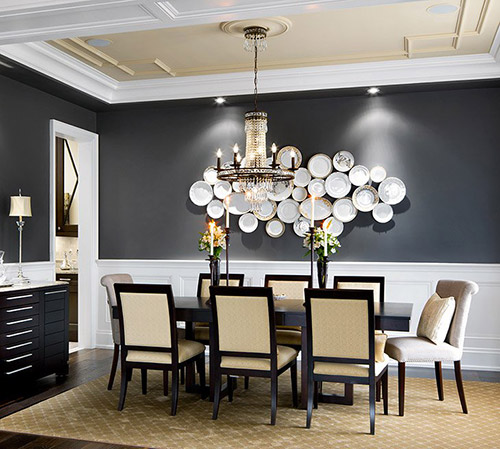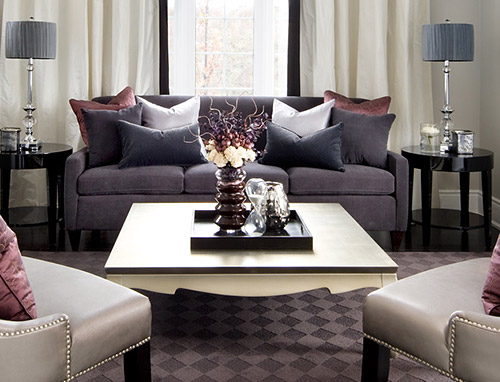Clients often ask, “How do you know what to do to make a room work?” I wish I could say it’s all natural talent, intuition and great taste but it’s a little more than that. I’ve practiced design for over 20 years and in that time I’ve learned a thing or two and I’m always happy to share what I know.
Here are my top five secrets for creating a well-designed room using a recently completed project as an example.
1. Scale: the size of your furnishings matter

Purchase sofas and chairs that not only properly fit you and your family’s needs but also fit the room. If your space has two-story high ceilings it doesn’t mean that furniture should be taller than usual, large or over-powering. The actual floor space remains the same regardless of the ceiling height.
Choose pieces that are comfortable and work proportionally with the floor area you have. Over-sized or over-stuffed furniture won’t look right in a small room, even if it is the main living space.
2. Details: play up the positives


Although you may have a small room, highlight the strongest feature in it. For instance, this dining room isn’t too large but it has a magnificent ceiling detail so by adding a color contrast here and a dramatic chandelier, the eye is pulled to these features rather than the size of the room.
In the adjacent living room, the strongest feature is its height so this is emphasized with double story drapery with a dramatic vertical detail on the inner edge of the drapes to really play up this wonderful height element.
3. Contrast: add energy to a room
Even if you love neutral colours, as this living room and dining room show, it doesn’t mean that a room has to be bland. Often when clients use too many neutrals that are the same contrast or brightness, a room can feel flat.
By including a range of neutral tones from light to dark within one space, a room will feel more energized. The more contrast you add the more dramatic a space will feel.
4. Focal point: create harmony and balance
Clients often struggle with what a focal point should be and why they need one at all. Basically a focal point directs a viewer to where they should look first, which helps create harmony and balance within a space. Traditionally, focal points were thought to be fireplaces or significant pieces of architecture but really anything can be a focal point if it is worthy of looking at!
Today a media center, a beautiful window or even a great piece of furniture can be the focus of a room. In the living room at the top of the page, the dramatic double story window is the focal point even though the room has a fireplace. The fireplace becomes a secondary focal point because it is in scale with the seating area in front of it leaving the expanse of windows the main draw in the space.
5. Variety: textures, patterns and shine create interest
Often clients are the most comfortable when everything matches, but that can leave a space looking a bit underwhelming. To make a room feel personal and interesting you need a range of pattern, texture and shine spread throughout.
For instance, shiny surfaces attract attention and can make a room feel more dramatic or formal, while matte surfaces feel more modern or understated.


Texture makes a room feel warmer, while pattern adds personality. If you have trouble mixing these all together skillfully, then just add texture to the carpet and keep pattern for the pillows.
Accessories like vases, candles and books can be a combination of shiny and matte so that you have a little bit of everything in your room.
Make your room amazing!
Hopefully these tips have given you some ideas and a few things that you can try in your home. What if you need more help? Every space is unique and poses different challenges.
If you want to take a room from average to amazing then book an appointment with us! Who knows, maybe your room will be the next award-winning room we design.

